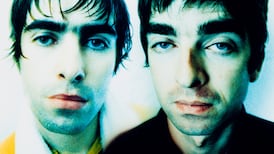Amsterdam's Royal Concertgebouw Orchestra (RCO) made a triumphant return to the National Concert Hall on Saturday. The orchestra engaged in a bit of theatre by leaving a number of onstage places vacant at the start. This was a way of highlighting the fact that in the opening work, Weber's Oberon Overture, the RCO players were being joined by 33 young musicians from the National Youth Orchestra of Ireland.
Twice in my youth I was called upon to play in what was then the RTÉ Symphony Orchestra, as one of four treble recorder players in performances of Gerald Barry's Lessness. Recorder players don't get many opportunities to play in symphony orchestras, so I suspect my learning curve was rather steeper than that of anyone on stage on Saturday.
I didn’t have the benefit of a youth orchestra training course or concert tour going into what turned out to be a fascinating, terrifying, immersive experience. On the other hand, I also suspect that Saturday’s exposure – the young players each shared a desk with an RCO member – was probably uplifting in ways that sitting with a group of often almost inaudible recorder players wasn’t.
The spirited performance of the Weber, conducted by the orchestra's incoming chief conductor, Daniele Gatti, revealed to listeners the first of what proved to be three very different identities that the orchestra would assume.
Gabetta’s grace
In Schumann's Cello Concerto the approach was reserved, tying in with the measured playing of the Argentinian soloist Sol Gabetta, who reoriented the piece in a way that seemed akin to a shift from baritone to tenor voice. The kind of new normal she presented made the solo part sound less stressed, more precise and moment-by-moment – more persuasive than is usual in a work that in many performances seems to suggest more than it can deliver. Gatti and his players were very adaptive to Gabetta's needs.
The atmospheric Brucknerian rustle boded well at the opening of the final work, Bruckner's Fourth Symphony, the Romantic. And in terms of sonic splendour, of plushness and fullness of tone, of blazing and earth-rumbling climaxes, and of finely balanced, multistranded textures, the orchestra under Gatti delivered everything that could have been asked for. For indulgent sonorous pleasure, I doubt if there's ever been a more glorious-sounding account of a Bruckner symphony at the National Concert Hall.
There was a price to be paid for such gorgeousness. The sheer deliberation of the approach sapped the work of some of its energy and momentum. This was a Bruckner performance for contemplation, not one to be urgently swept along by.
Electronic Doyle
Earlier on Saturday afternoon, the Hugh Lane Gallery in Dublin was the venue for a one-man show by Roger Doyle. The film-maker Brian Lally is making a documentary, The Curious Works of Roger Doyle, on the 67-year-old composer, whose first opera, Heresy, is due to receive its premiere at Project Arts Centre in Dublin at the end of October.
Doyle has been branded the "godfather of Irish electronic music", and his Hugh Lane programme, which was being filmed for the documentary, saw the composer perform at the piano, although the world of electronics was woven through the 60 minutes of music, not just through the often sweet electronic textures that are one of the composer's hallmarks but also through a long 1989 telephone message left by the late Jonathan Philbin Bowman.
Doyle’s keyboard writing has a casual, improvisatory air about it and seems carefully judged not to stray beyond his own idiosyncratic technique, which is based on a kind of primitive strumming for the left hand, with plaintive melodies, sometimes elaborately decorated, in the right. Sentimental chord patterns, interspersed with occasional harmonic sidesteps, are the order of the day. His piano music has long seemed to be the weakest part of his output, and so it seemed again on Saturday.
When the sounds of the outside world stray into the annual summer organ concerts at St Michael’s Church, Dún Laoghaire, it is usually a matter of concern to listeners. And in the days of the Festival of World Cultures, the sounds from outside produced effects that could be more grating on Bach and Messiaen than any revving of motors or the passing-by of a noisily chatty crowd.
Last Sunday the everyday sounds were brought in on purpose for a programme by David Bremner that included only a single piece for organ pure and simple. Bremner played excerpts from Tom Johnson's Organ and Silence, a work that offers exactly what it says: short musical shavings presented this way and that, with gaps between each view.
The big offering was a new piece, Eight Windows, by Bochum-born David Stalling, who has been living and working in Ireland since the 1990s and is a lecturer in music at Dundalk Institute of Technology. The work buries the organ in a sonic landscape created from a range of field recordings made in the locality, involving the Dart, the weather, the sea, and a family outing on Sandycove Beach. On a first hearing, it sounded like less than the sum of its parts.
Bremner's own Repetition-Canon, another work being heard for the first time, harked back to the kind of experimental music explored in the 1960s by the German organist and composer Gerd Zacher, who died two years ago. Bremner exploited what you might call the in-between sounds that the mechanics of the organ can be made to produce, and the effect of his new work was like that of a sound machine that has a Jean Tinguely-like deficiency in its workings.
Gráinne Mulvey's Streetorgsounds of 2012, which involves street sounds from Dublin's city centre, has a fascinating latency about it, as if it's inhabited by some gremlin that wants but never quite gets to unleash a torrent of fairground music.
mdervan@irishtimes.com











